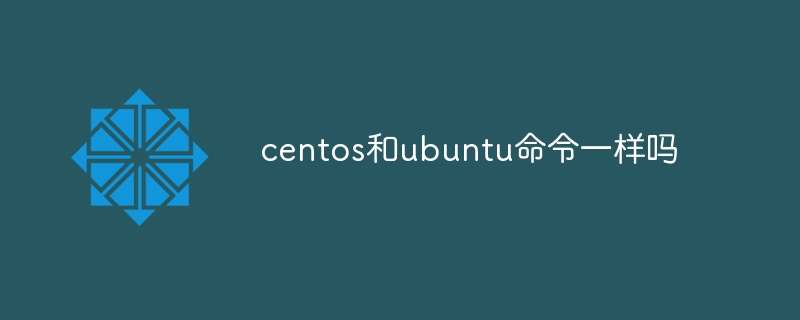Home >Operation and Maintenance >CentOS >Are centos and ubuntu commands the same?
Are centos and ubuntu commands the same?
- 下次还敢Original
- 2024-04-02 21:12:19788browse
No, the commands for CentOS and Ubuntu are not exactly the same. They use different package management systems and system initialization systems, resulting in different commands for installing, updating, and removing software. For example, yum is used in CentOS, while apt is used in Ubuntu. CentOS uses systemd, while Ubuntu uses upstart or systemd, resulting in different commands for managing services.

Are the CentOS and Ubuntu commands the same?
Answer:
No, the commands for CentOS and Ubuntu are not exactly the same.
Detailed explanation:
CentOS and Ubuntu are Linux-based operating systems, but they use different package management systems:
- CentOS uses yum (Yellowdog Update Manager)
- Ubuntu uses apt (Advanced Packaging Tool)
Therefore, the commands to install, update and remove software are different in the two operating systems . Here is a comparison of some commonly used commands in both operating systems:
| Commands | CentOS (yum) | Ubuntu (apt) |
|---|---|---|
| Install the software package | sudo yum install |
sudo apt install |
| Update package | sudo yum update |
sudo apt update && sudo apt upgrade |
| Remove package | sudo yum remove |
sudo apt remove |
| List installed packages | sudo yum list | sudo apt list --installed |
In addition to software management commands, there may also be differences in some other commands between CentOS and Ubuntu. For example, CentOS uses systemd as the system init system, while Ubuntu uses upstart or systemd. This means that the commands used to manage services are also different in the two operating systems.
In general, although CentOS and Ubuntu are both Linux-based operating systems, the commands they use are not exactly the same due to differences in the package management system and system initialization system.
The above is the detailed content of Are centos and ubuntu commands the same?. For more information, please follow other related articles on the PHP Chinese website!

